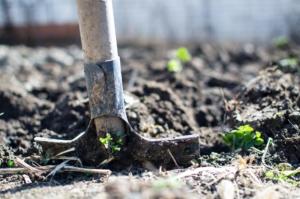Soil Health
Soil is one of our greatest resources. It is the foundation for agriculture, and it plays a critical role in protecting the air we breathe, water we drink, and food we eat. Through practices like composting and cover cropping, producers can build healthier soil and reap the benefits which include growing healthy food, building resilient farms and food systems, and increasing producer profitability and resiliency in the face of climate and market volatility.
Common agricultural processes like tillage, monocropping, and the overapplication of fertilizers and synthetic inputs deteriorate soil organic matter over time. According to the USDA , Montana agricultural lands typically have lost around 70% of soil organic matter over generations of tillage and soil erosion. When fields are continuously tilled, for example, the soil loosens to smaller aggregates, making it susceptible to erosion and runoff. These common agricultural practices compromise soil’s productivity and cost producers more money in the long term.
With 60 million of its 90 million acres devoted to agriculture, Montana has the opportunity and obligation to protect and invest in its already hard-working soils.
Policy Solutions:
- Adopt a Montana Healthy Soils Program to cost-share soil building practices and collect data on their benefits—including improving access to affordable and reliable soil health tests.
- Fund Montana’s conservation districts to provide additional on-farm and ranch technical assistance.
- Increase Montana processing capacity to support a more resilient and community based food system, able to make use of a diversified cropping system.
- Create a database of “Soil Champions” who exemplify soil stewardship.
- Through the MT Department of Agriculture and NRCS, develop a mentorship program to enable soil champions to assist other growers who want to experiment with or adopt soil health practices.

